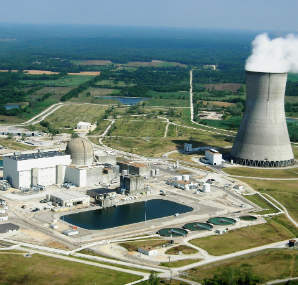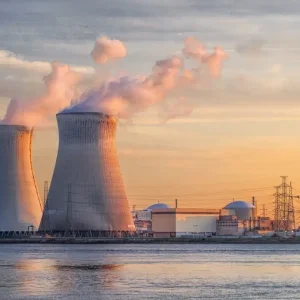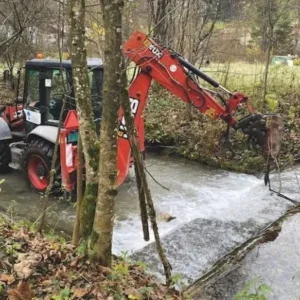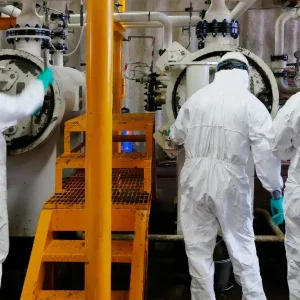
In a fleet, a business decision would emanate from the top and be enforced on lower-level operations. The STARS Alliance of nuclear power plants in the western USA aims to develop common policies through technical collaboration and consensus-building. Alliance leaders argue that it will improve performance and increase member savings. Its first five-year operating plan in 2013 has ambitious targets for improving performance in terms of industry ranking: improvement from the bottom 25% to the top 25% of US plants in operations and maintenance cost, for example, and from the top 75% to top 25% of US nuclear plants in each of nuclear safety and personnel safety (Table 1). And in December 2012 it received clearance from the US Department of Justice to begin common procurement activities in areas such as valve services and low-level radwaste management.
| 2012 | 2013 | 2014 | 2015 | 2016 | 2017 | |
|---|---|---|---|---|---|---|
| Nuclear safety: manual/automatic SCRAMS, by quartile | 3 | 3 | 2 | 2 | 1 | 1 |
| Radiation safety: collective radiation exposure, by quartile | 2 | 2 | 1 | 1 | 1 | 1 |
| Personnel safety: total industrial safety accident rate, by quartile | 3 | 3 | 2 | 2 | 1 | 1 |
| Number of STARS stations in lowest level of NRC oversight (Column 1) | 4 | 6 | 7 | 7 | 7 | 7 |
| INPO composite fleet index ranking* | 7 | 6* | 5* | 5* | 4 | 3 |
| Station training accreditation with no probation | 7 | 7 | 7 | 7 | 7 | 7 |
| Total cost savings ($ million) | 18 | 21.6 | 25.2 | 28.8 | 32.4 | 36 |
| Composite STARS O&M cost (million/kWh)* industry ranking, quartile | 4 | 3* | 3* | 2* | 2* | 1* |
| Equipment reliability index, quartile | 2 | 2 | 1 | 1 | 1 | 1 |
| *Not including SONGS, currently in long-term outage because of steam generator issues | ||||||
STARS president James Becker says: "Our improving performance goals are ambitious and long-term. We are not looking to turn around performance on a dime. We want it to be sustainable and consistent. That’s why we’ve laid out for ourselves a five-year trend line for improving performance. Our idea is that in all categories, in a five-year period we can dramatically improve performance. The idea is that we need to give ourselves time to achieve that, and we want our results to be significant. I often refer to it as a glide path. We hold ourselves accountable to that performance in each year."
That forecasted improvement will need to occur over a wide range of current performance; despite their similarities, the stations are not performing at the same level, Becker says. "There is a range of performance within STARS. I would not use the word ‘massive’. But there is a considerable range of performance between the best STARS members and those ranked toward the lower part."
He continues: "In some performance measures such as cost, or collective radiation exposure, it is very appropriate to strive in future years for STARS stations to exceed what are right now the best performances."
History
The seven members, Union Electric Co (Callaway), Arizona Public Service Co (Palo Verde), Luminant Generation Company (Comanche Peak), Pacific Gas & Electric (Diablo Canyon), Southern California Edison Co (San Onofre), STP Nuclear Operating Company and Wolf Creek Nuclear Operating Company, operate between them 13 PWRs. They first joined up about a decade ago as a subgroup of the Utilities Service Alliance, a non-profit group of nuclear utilities established in 1995 that aims to share existing resources and jointly procure some goods and services, and consolidate some central functions such as accounting, materials management and security. The STARS name, Strategic Teaming and Resource Sharing, began then. Eventually, members realized they had more in common than other stations: all are large Westinghouse or CE-built PWRs that started operation in the period 1983-9, and operate in USNRC’s region 4 (the West). In 2010, the alliance made the decision to split off from USA and established a new business, STARS Alliance LLC. (As of January 2013, only Wolf Creek continues to be a member of USA).
Years of preparation are now coming to a head; staff have been hired (there are 12 full-time staff) and processes written. Several hundred performance indicators have been agreed and set up; as of mid-April, they have been tracked for three quarters. A meeting planned for this month (May) will be the first time that the alliance has looked, at the very widest scope, at how its results compare with its operating plan goals. The last remaining draft elements of the group’s structure are due to be built out by mid-year, including a support procedure.
Organization
At the top is the STARS board of directors, which is made up of the seven chief nuclear officers of the participating utilities. Decisions such as the STARS budget or the admittance of an eighth member require its unanimous approval. Other actions, such as changes to the operating plan and strategy for the year, require a simple majority. Below the board is president, Becker, a former site vice-president at Diablo Canyon who joined in 2012. "Once the board has given the mandate, how we achieve that, how we support station performance and operational excellence, those decisions are left with me," Becker says. Subcommittees of site and engineering vice presidents at each of the stations support Becker’s work. They meet monthly to oversee station performance.
Beneath the executive level, there are a number of committees and working groups. Two STARS employees work as managers in the functional areas of training and engineering. They oversee station performance, spot declines in performance, identify best practice, and pursue its adoption at all stations, and to act as centres of expertise. A third FAM, in regulatory affairs, is due to be appointed next month. (STARS is developing more, but each has to be justified by a business case, Becker says).
The STARS FAMs or a team leader from a member head up a total of 13 peer teams, made up of employees from each station, in these subjects: chemistry, radiation protection, maintenance, industrial safety, performance improvement, outage management, work control, operations, emergency planning, security, engineering, regulatory affairs and training. Peer teams are tasked with achieving and maintaining performance targets. They have developed the performance indicators for their areas, and act as the first line of defence for emergent or support issues.
A seven-member management council, made up of managers at each of the seven stations, are responsible for representing STARS at the station; they assist in STARS-station communications, and help facilitate peer teams. They oversee the peer teams’ data collection efforts, and feed back to STARS judgements about whether those indicators are effective or ineffective in improving performance.
What STARS does
There are five big areas of operation: oversight, support, special projects, life extension and joint procurement.
Oversight is based on monitoring common performance metrics, broadly in terms of operational performance, regulatory performance and financial performance. Performance metrics, from worker safety to generation output to unit capability factor, are now being compiled and monitored. (STARS has a memorandum of understanding with the Institute of Nuclear Power Operators to share some of its indicators within the group). The board of directors has a formal management review meeting; the two executive vice president subcommittees hold four performance reviews per year.
Metrics can identify a station’s decline in a particular area — for example in terms of equipment reliability, as indicated by a backlog of maintenance issues that has been increasing for three quarters. (Other triggers might be based on NRC performance indicators, or other metrics). Becker explains: "That is a support process trigger, and the FAM would work with his/her counterparts at the station, and ask what is their recovery plan? Then the plan is reviewed, critiqued, and given suggestions for improvement. The FAM offers support to test the recovery plan down the road, and monitors the effectiveness of the plan going forward." Becker points out that it is down to the station-and not STARS-to devise the improvement plan. An offer of support from STARS cannot be refused. A formal escalation process deals with the possibility that a STARS FAM or peer reviewer is unhappy with a station response; it starts with the peer team and can ultimately reach the board of directors.
STARS manages and coordinates certain group projects through a dedicated project manager. They include the US Nuclear Regulatory Commission’s mandated post-Fukushima response, and other regulatory initiatives on cyber-security and buried piping. But the single largest project organized by STARS is the 20-year regulatory licence review. This STARS function pre-dates the newly-independent alliance structure; its support includes compiling material, managing the NRC audit and hearing. So far Palo Verde and Wolf Creek stations have received licence reviews; others are in varying phases of the project. (The alliance is working through an agreed station queue).
Normally, collaboration between competitors is illegal because it can restrict competition; but in special circumstances there is what the US Department of Justice calls an ‘antitrust safety zone’. The Alliance made two special applications to the US DOJ — the first to set up STARS, and the second to set up joint procurement. Both were approved in 2012. STARS requested permission to begin joint procurement in eight areas: turbine maintenance services, improved spent fuel pool instrumentation, steam generator services (including eddy current testing), radiation protection services provided by technicians, on-site valve services, health physics products (protective clothing), low-level radwaste processing and disposal, and reactor coolant pump maintenance (seal refurbishment/ replacement). The Alliance is now in the final stages of its first joint request for proposal, in valve services (testing and maintenance), scheduled to be released this month, Becker says. The process also includes a bid evaluation specification, including price, quality, schedule, performance, and in many supplier diversity. Some important areas of procurement, such as fuel fabrication, for example, or control rod products and services, will not be procured jointly.
Key suppliers such as Westinghouse or Shaw (now owned by Chicago Bridge & Iron) are managed in a different way, through strategic partnerships. Becker says that utilities should listen to their suppliers. "For example, Westinghouse does business with all seven members, and has business across the US, and worldwide. It should be aware of best practices that we may not be aware of, in STARS, or have adopted. It can help us adopt practices, or where they see inconsistencies or gaps, that serve as a source of information and advice."
When asked whether the scope of such strategic partnerships might include a group deal with all seven stations for some service such as outage management, for example, Becker replies: "It is within the realm of possibility that we could standardize."
Becker says that one of STARS’ goals is to double savings to its members over the next five years (defining savings as either rebates for next year’s work based on the current year’s bookings, or preferred pricing as a result of group discounts). He also says that the greatest percentage of savings is likely to come from the supply chain.
Photo: Callaway, part of the STARS Alliance (credit: Ameren UE)






